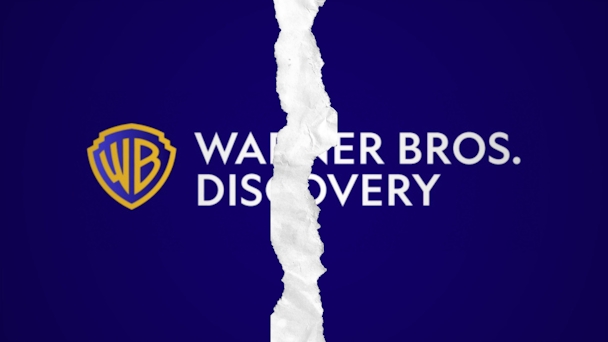Warner Bros Discovery splits streaming and cable to sharpen focus. Here’s why it matters for brands
The media giant is being split up, separating growth from decline. For advertisers, this isn’t just restructuring. It’s a clear sign of how to stay competitive in a fragmented, post-cable era.

The Warner Bros split
Warner Bros Discovery (WBD) is splitting in two. The company announced plans to separate into two publicly traded entities by mid-2026, one focused on streaming and studios, the other on its global TV networks. The move reflects growing pressure across the media industry to decouple growth assets from legacy businesses. It carries major implications for advertisers and agencies navigating a fractured media environment.
The split will divide Warner’s business between its high-growth content and IP engine, which includes HBO, Max, DC Studios and Warner Bros Pictures, and a declining yet still-profitable portfolio of linear networks such as CNN, TNT, TBS, Discovery and Discovery+. CEO David Zaslav will lead the content and streaming business, while CFO Gunnar Wiedenfels will oversee the networks arm.
“By operating as two distinct and optimized companies,” Zaslav said in a statement, “we are empowering these iconic brands with the sharper focus and strategic flexibility they need to compete” in an evolving landscape.
Want to go deeper? Ask The Drum
Why now matters
Cable’s decline is no longer theoretical. US cable subscriptions have dropped from roughly 100m in 2015 to around 60m in 2025. WBD’s linear networks, once bundled with the company’s premium IP, are increasingly seen as a financial drag. Meanwhile, streaming growth, particularly around HBO Max and DC content, is central to the company’s future.
The financial picture adds urgency. WBD holds over $38bn in debt, much of it tied to the 2022 merger with AT&T’s media assets. Analysts expect the bulk of that burden to stay with the network’s entity post-split. To support the transition, WBD secured a $17.5bn bridge loan from JPMorgan.
Despite the risk, investors welcomed the decision. WBD shares jumped 8% to 12% after the announcement. Analysts suggested that the separation could bring clarity to investors and unlock growth potential for each business. “With the split, Warner Bros has a better chance to gain broader investor interest and focus management on fewer things,” said Dan Coatsworth of AJ Bell.
Still, the move comes amid wider concern over leadership and strategy. Nearly 60% of WBD shareholders voted against Zaslav’s $52m compensation package this year, underscoring dissatisfaction with the company’s performance since the merger.
Advertisement
Planning in a post-bundle world
For marketers, the Warner Bros Discovery split sends a powerful signal. The days of broad, bundled TV reach are fading. Traditional linear channels like CNN and TNT will no longer benefit from the halo effect of prestige brands like HBO. Instead, linear becomes a niche strategy. It may still be useful in certain cases, but it is no longer the center of a media plan.
Streaming is being repositioned as a standalone growth engine. That makes branded storytelling in premium environments not just valuable, but essential. For brands, it is no longer about placing a 30-second spot. It is about finding ways to live inside the IP.
As Zaslav explained, operating as two companies provides the strategic flexibility needed to compete. That flexibility may become especially important on the networks side, which now faces the task of proving its long-term value without the support of high-growth streaming properties.
Brand-side planners will need to recalibrate. The era of the all-in-one media bundle is giving way to a fragmented ecosystem with different rules and value drivers. What worked five years ago will not work now. And the companies that adapt first, that understand which environments offer scale, which offer depth and which are simply legacy, will be the ones best positioned to thrive.
Advertisement

